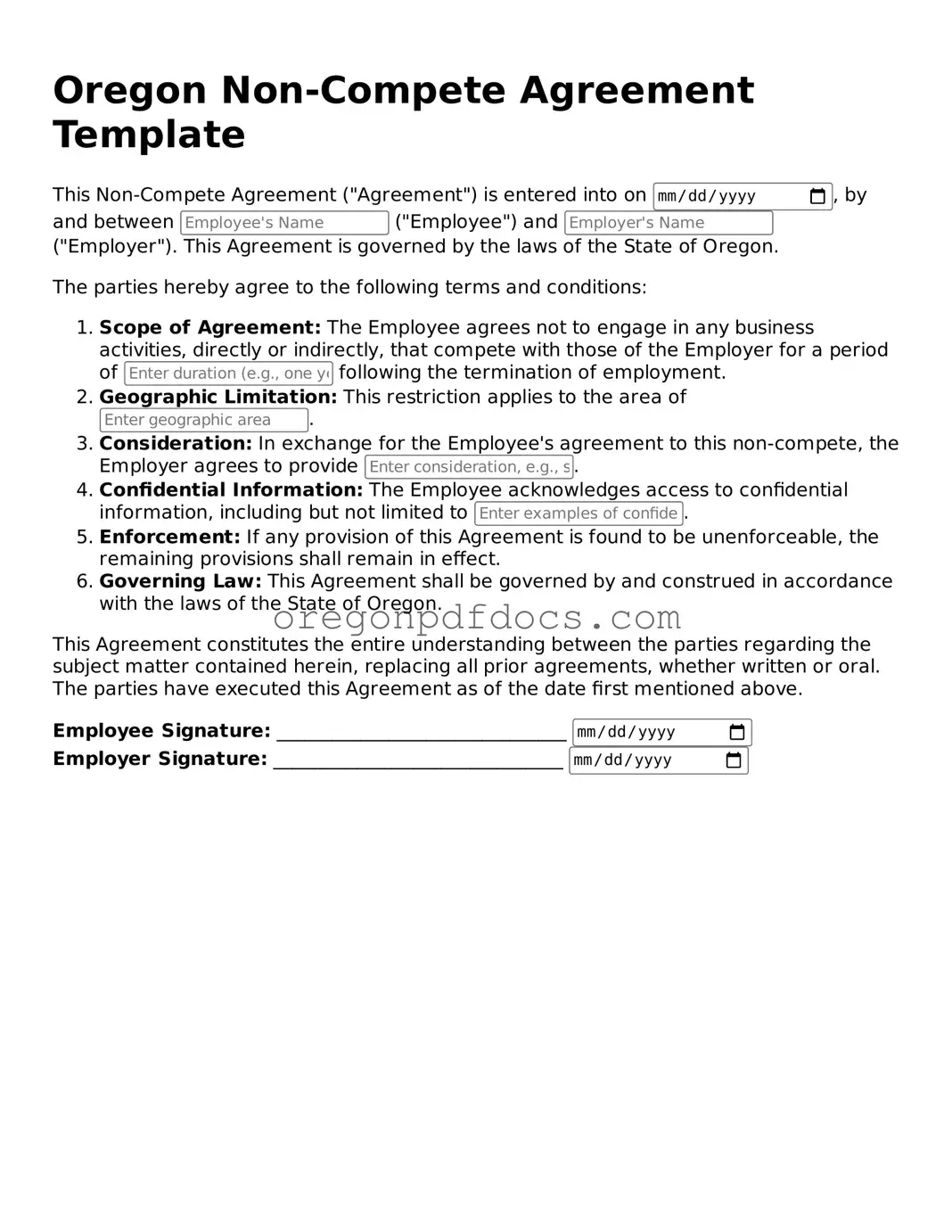Printable Oregon Non-compete Agreement Document
A non-compete agreement is a legal document that restricts an employee from working for competitors or starting a competing business for a specified period after leaving a job. In Oregon, this agreement must meet certain criteria to be enforceable, ensuring that both employers and employees understand their rights and obligations. For those looking to navigate this important aspect of employment law, filling out the Oregon Non-compete Agreement form is a crucial step; click the button below to get started.
Make My Document Online
